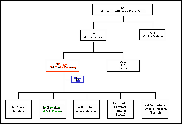
On 28 February, 1991, a Fox vehicle belonging to Task Force Ripper was directed to inspect an Ammunition Supply Point (ASP) located southwest of Kuwait International Airport, in the vicinity of map coordinates QT75393910. While inspecting the ASP, the Fox crew reported alerting on traces of three different chemical agents within 100 meters of each other. The Fox vehicle MM-1 Mass Spectrometer operator printed tapes of the three alarms. The vehicle commander, GySgt Grass, passed these tapes to his chain-of-command, which, in turn, reported up through the 1st MarDiv to Central Command (CENTCOM). As a result, an Explosive Ordnance Disposal (EOD) team was sent to the ASP the following day. After a thorough inspection on March 1, 1991, the EOD team did not find any chemical weapons. The negative results of this inspection were also passed up the 1st MarDiv chain-of-command, and reported in the CENTCOM Logs. The ASP was dismantled during cleanup operations in Kuwait after the Gulf War. No chemical weapons were found during these cleanup operations.
Based on extensive research of all available documentation on these events, numerous interviews of the personnel involved, as well as the United Nations’ Special Commission on Iraq (UNSCOM) and the Intelligence Community’s assessment that Iraq never moved chemical agents or weapons into Kuwait, we assess it is unlikely there were chemical weapons stored in this ASP. These alerts were most probably false positives caused by battlefield contaminants, contaminants from the orchard and/or contaminants from a nearby industrial facility.
In May 1996 and May 1997, Gunnery Sergeant (GySgt) George Grass, testified before the Presidential Advisory Committee on Gulf War Illnesses about several suspected chemical weapons incidents of which he had personal knowledge during the Gulf War. GySgt Grass was a Marine Corps Nuclear, Biological and Chemical (NBC) weapons defense specialist and Fox Vehicle Commander. He also testified in December 1996 before the Government Reform and Oversight Subcommittee of the House of Representatives. In each testimony, GySgt Grass discussed several specific Fox alerts for chemical warfare agents (CWA), including three at an Ammunition Supply Point located southwest of Kuwait City. The first public discussion of this event occurred in 1993, when a Marine linked his service with Marine units during the Gulf War to a severe disease he was suffering. He asked several Marine NBC specialists, including GySgt Grass to make statements about any CWA they may have detected during the war. Several Marines were then asked to testify in front of several congressional committees in 1993 and 1994—which they did. In 1994, the Marine Corps initiated an investigation in response that concluded the Marine was not suffering from any classical chemical warfare exposures.[2]
Task Force Ripper Chain-of-Command
The ground war to liberate Kuwait began on February 24, 1991. By February 28th, after four days of fighting and movement, the 7th Marine Regiment, known as Task Force Ripper, was headquartered at Al Jaber Airfield and the 1st Marine Division (1st MarDiv) had taken their objectives around Kuwait City. Task Force Ripper was part of the 1st MarDiv—which was in turn a major subordinate unit of the I Marine Expeditionary Force (I MEF). (Figure 2) Most of the units discussed in this narrative were in the 1st MarDiv or under this division’s operational control. Task Force Ripper consisted of the three battalions of the 7th Marine Regiment: the 3rd Tank Battalion, the 1st Battalion of the 5th Marine Regiment (1/5), and the 1st Battalion of the 7th Marine Regiment (1/7). Task Force Ripper was also augmented with forces from the 1st Combat Engineer Battalion, the 3rd Amphibious Assault Battalion and the 3rd Battalion of the 11th Marine Regiment (3/11), which provided artillery support. The 1st MarDiv also gave Task Force Ripper one of the four Fox NBC Detection vehicles attached to the division.[3] (Figure 3) The Task Force Ripper Fox vehicle was commanded by GySgt Grass.
Figure 2. Organizational Chart
Figure 3. A Fox NBC Reconnaissance Vehicle in Desert Storm Camouflage.
| First Page | Prev Page | Next Page |